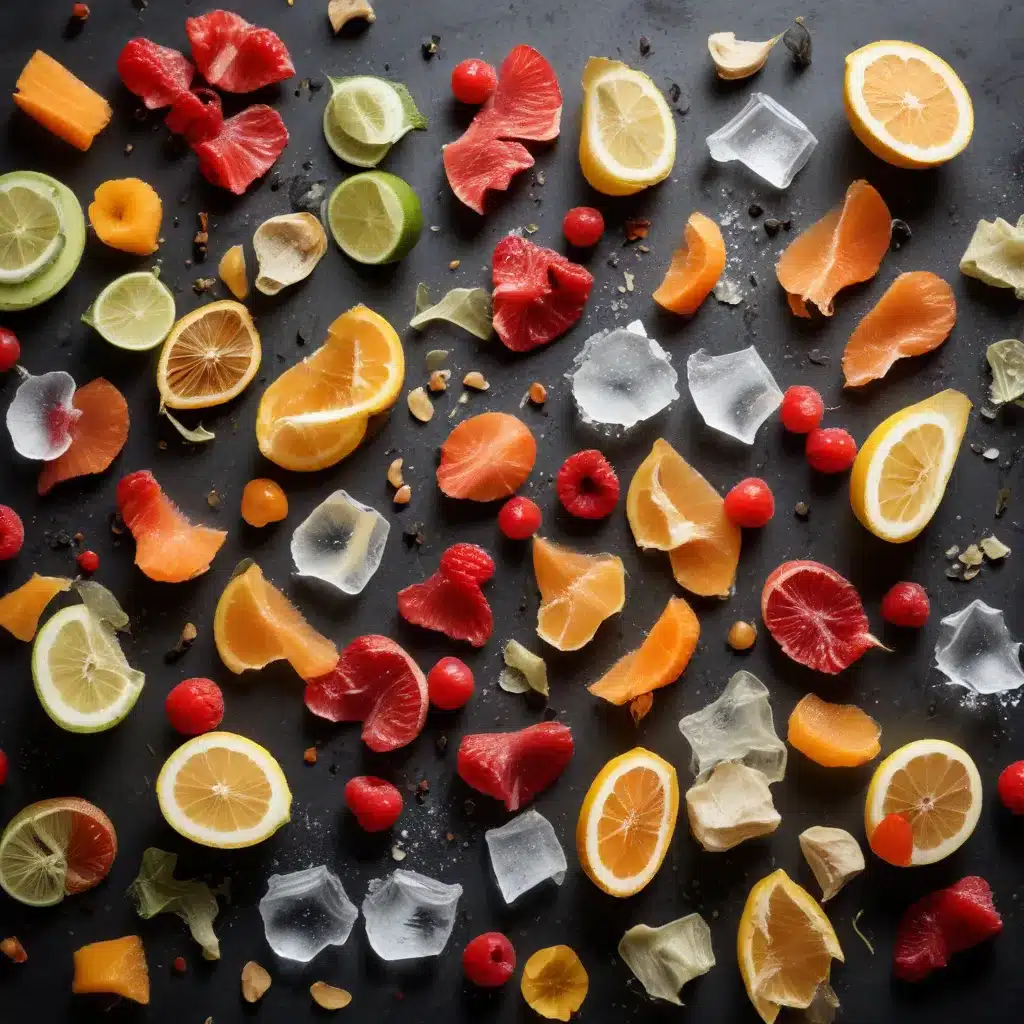
The Enduring Power of Freeze-Drying
In the ever-evolving world of food preservation, one technique has consistently stood out for its ability to preserve the delicate balance of flavors and nutrients – freeze-drying. As a seasoned culinary professional, I’m excited to dive into the science behind this remarkable process and explore why it remains the gold standard for maintaining the integrity of our favorite ingredients.
Oxygen and heat are the sworn enemies of both flavor and nutrition. When it comes to the degradation of vitamins and aromatic compounds, these two forces work relentlessly to strip away the qualities that make fresh produce so vibrant and appealing. Understanding the molecular structure of these crucial components is the key to unraveling the science behind freeze-drying’s superiority.
The Chemistry of Flavor and Nutrition
Flavor molecules, often complex organic compounds, are rich in electron-dense sites, making them prime targets for oxidation. When oxygen molecules “steal” these electrons, the result is a profound shift in the compounds we perceive as delicious, transforming them into bitter, unpalatable substances. Similarly, vitamins – which are crucial for myriad biochemical reactions in the body – are even more susceptible to this oxidative degradation.
Heat accelerates this process, as the increased kinetic energy of the molecules allows for more frequent and impactful collisions with oxygen. This is why the culinary world has long recognized the importance of minimizing exposure to both heat and oxygen in order to preserve the integrity of our favorite ingredients.
The Freeze-Drying Advantage
Freeze-drying, in contrast, dehydrates food in a vacuum and at cold temperatures, effectively blocking both oxidative and enzymatic degradation. By removing the water content while maintaining the structure of the food, freeze-drying preserves the delicate balance of flavors and nutrients that are so easily lost through other preservation methods.
As the source from Backpacking Light notes, numerous studies have demonstrated the superior quality of freeze-dried foods compared to those preserved through heat-assisted dehydration. By quantifying the percentage of electron-donating compounds that remain after various preservation treatments, researchers have consistently found that freeze-drying outperforms other methods in retaining both flavor and nutritional value.
The Importance of Vitamin Synthesis
It’s important to note that while heat-assisted dehydration may result in the loss of some vitamins, the human body’s reliance on these essential compounds is a bit of an evolutionary quirk. Our ancestors, like many other animals, were able to synthesize their own vitamins, rendering them less dependent on their exact dietary intake.
As the source from the University of Minnesota explains, vitamins are essentially molecules that we can no longer produce on our own due to genetic mutations. However, since these nutrients are abundant in whole, unprocessed foods, we can afford to lose a significant portion of them during preservation and still meet our dietary needs.
This means that heat-assisted dehydration, while not as optimal as freeze-drying in terms of preserving the full spectrum of flavors and nutrients, is still a viable and effective method of food preservation. The key is to start with the highest-quality, most nutrient-dense ingredients possible, and then carefully manage the preservation process to minimize any undesirable effects.
The Art of Tomato Sauce
One prime example of a food that benefits tremendously from the freeze-drying process is tomato sauce. As a vital component of every backpacker’s pantry, a good tomato sauce can elevate a simple meal to new heights, providing a delicious and nutrient-dense foundation for a wide range of dishes.
When it comes to creating the perfect tomato sauce, the quality of the ingredients is paramount. As the source from Backpacking Light notes, garden-fresh tomatoes are the way to go, as store-bought varieties are often bred for appearance and shelf-life rather than flavor. Heirloom tomatoes, such as the Corne de Bouc variety, offer a superior texture and concentration of flavors that simply can’t be matched by their mass-produced counterparts.
The basic process for making a robust, flavorful tomato sauce is relatively straightforward: sauté the garlic, add the tomatoes, and let the mixture simmer. By following this simple formula and leveraging the power of freeze-drying, backpackers and home chefs alike can create a versatile, nutrient-rich base for a wide range of delicious meals.
Maximizing Flavor and Nutrition
Once the tomato sauce is prepared, it can be dehydrated or freeze-dried to ensure optimal flavor and nutrient retention. The dried sauce can then be easily rehydrated in the backcountry, adding a burst of umami and a dose of essential vitamins and minerals to a variety of dishes.
Freeze-drying, in particular, excels at preserving the delicate balance of flavors and nutrients in the tomato sauce. By removing the water content while maintaining the structural integrity of the food, this process ensures that the sauce retains its vibrant color, rich aroma, and robust flavor, even after extended storage.
Whether you’re preparing for a multi-day backpacking trip or simply seeking to stock your pantry with a high-quality, long-lasting tomato sauce, the combination of homemade ingredients and freeze-drying is a winning solution. By understanding the science behind this preservation technique, you can unlock the enduring power of your favorite culinary creations.
Conclusion
In the ever-evolving world of food preservation, freeze-drying remains the gold standard for maintaining the delicate balance of flavors and nutrients. By exploiting the molecular structures of key compounds and minimizing exposure to oxygen and heat, this remarkable process ensures that our favorite ingredients retain their vibrant qualities, even after extended storage.
As you embark on your culinary adventures, whether in the backcountry or your own kitchen, remember the power of freeze-drying and the importance of starting with the highest-quality, most nutrient-dense ingredients. By embracing the science behind this preservation method, you can unlock a world of delicious, nutritious possibilities, one bite at a time.
Visit Kitchen Warrior to explore more expert tips, recipes, and insights from our team of seasoned culinary professionals.


